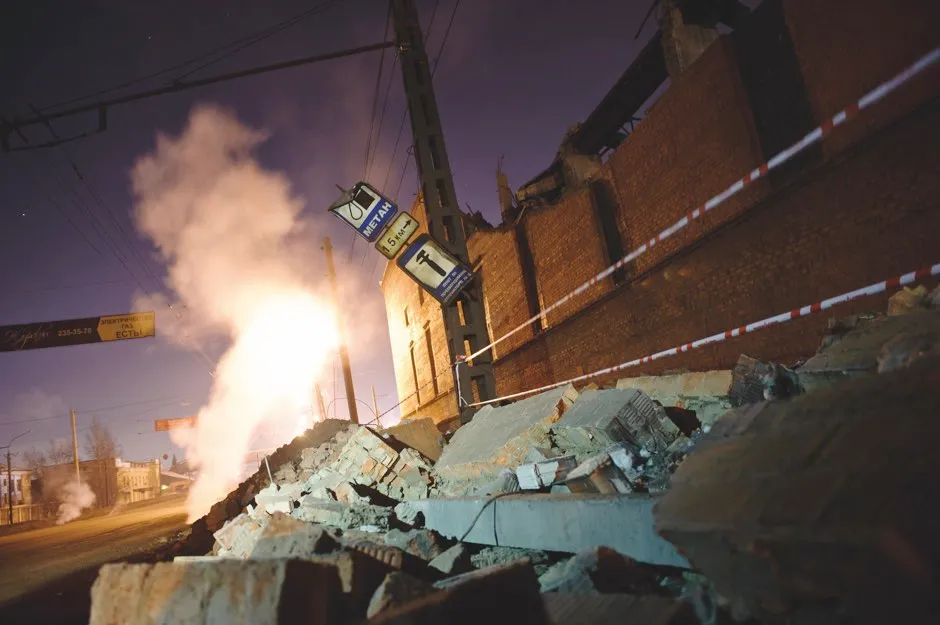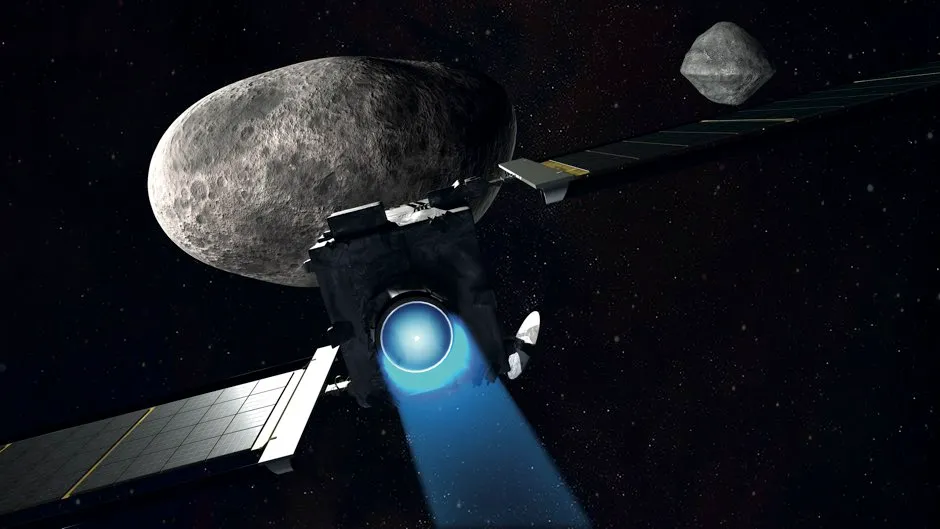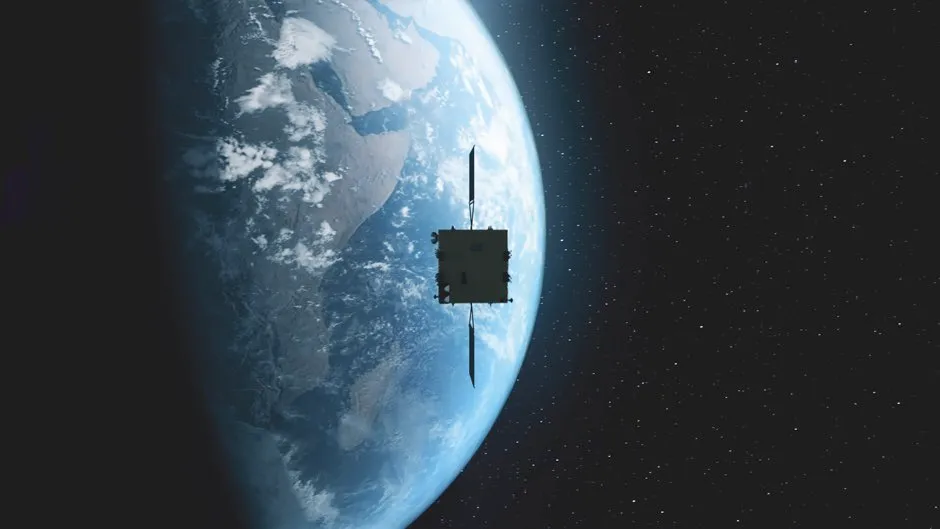Remember the film Armageddon? It’s the one where Bruce Willis climbs aboard a space shuttle, and uses a nuclear bomb to blow apart an asteroid the size of Texas just hours before it hits Earth and wipes out all life as we know it.
Although the film can hardly be described as scientifically accurate, a new mission by NASA and the European Space Agency (ESA), called the Asteroid Impact and Deflection Assessment (AIDA), will attempt to make some of it come true.
Read more about natural disasters:
- The masters of natural disasters
- Wildfire science: computer models, drones and laser scanning help fan the flames and prevent widespread devastation
In late July 2021, the first part of the mission, NASA’s Double Asteroid Redirection Test (DART) will launch from Cape Canaveral on a suicide trip. The spacecraft will set course for the binary asteroid system Didymos, and after a 14-month chase, DART will smash straight into the space rock.
The aim is not to shatter the target, but to change its orbital speed by a small amount – the kind of deflection that could save our planet should an incoming asteroid be detected.
Averting armageddon
The threat from asteroids comes on a number of different scales, none of them good. At the most extreme end are the so-called ‘global killers’. These are asteroids larger than 10 kilometres in diameter. As the name suggests, it was an asteroid in this category that wiped out the dinosaurs 65 million years ago.
Thankfully, we don’t need to worry too much about a repeat of that cataclysm. “We’re 95 per cent sure we are not going to get whacked by a global killer in the next hundred years,” says Prof Alan Fitzsimmons, an astronomer at Queen’s University Belfast.

We know this because planet-killing asteroids are relatively bright due to their size, and have been picked up in surveys over the past few decades. None of them are close enough to cause any sleepless nights at the moment.
It’s a different story at the other end of the scale, where the asteroids are smaller and dimmer. “We’ve still not found the majority of smaller asteroids,” explains Fitzsimmons. “Our catalogues are woefully incomplete at this stage – not through lack of trying but simply through lack of resources.”
And this is a big concern. Asteroids between 100 and 300 metres across are dubbed ‘city killers’ because when they hit, they could easily devastate a city. In 1908, an asteroid at the lower end of this size range struck the Earth in the Tunguska region of Siberia, Russia.

Thankfully, it was an uninhabited area and no one is thought to have died, but the destruction was astonishing. The impact blast flattened 2,000 square kilometres of forest. Had it taken place over central London, the devastation would have just about stretched to where the M25 is today.
In 2013, a 20-metre asteroid entered the atmosphere over the Russian city of Chelyabinsk. It exploded in mid-air, creating a shock wave that shattered windows across the city, injuring around 1,600 people.
“When one balances the likelihood of impact with how many of those kinds of asteroids are out there, it’s likely that the biggest threat to us is from a currently unknown asteroid between 100 and 300 metres across,” says Fitzsimmons. “It will lay waste to whatever it hits, and if it’s 300 metres across that will be a very large area: about the size of a small state.”

The European part of the AIDA mission is called Hera, named after the Greek goddess of the starry heavens. This spacecraft will arrive about three years after DART’s impact to study the results of the cosmic smash-up. And as unlikely as it seems, part of the reason it exists is probably down to that glitzy Hollywood blockbuster.
“It was not so long after the film Armageddon that people were wondering what the real space agencies would do in that situation,” says Ian Carnelli, the manager of ESA’s discovery and preparation team, located at ESA’s headquarters in Paris.
Read more about asteroids:
That early round of interest led to ESA putting together a team of experts called NEOMAP, the Near Earth Object Mission Advisory Panel, of which Fitzsimmons was a member.They came together in the early 2000s to assess missions that could address threatening asteroids.
They decided that the best option would be a deflection test like AIDA, but it came at a cost. “It was clear from the very beginning that this was an expensive mission and would require international collaboration,” says Carnelli.
Picking a target
There was another stumbling block to a deflection test: technology. The original mission targeted an asteroid known as 2002 AT4, and would attempt to alter its velocity by around 0.5 millimetres per second. But trying to measure this minuscule change was particularly difficult because the asteroid was travelling around the Sun at 30 to 40 kilometres per second.
Astronomer Dr Andrew Cheng of Johns Hopkins University came up with a solution. Instead of targeting a single asteroid, he suggested to find a pair that are in orbit around one another and target the smaller of the two. That way the 0.5 millimetres per second will be much easier to measure because the pair will only be moving around each other at a few centimetres per second.
This is where the asteroid Didymos comes in. It was discovered back in 1996, and was shown to be a pair of asteroids in 2003. The larger is 750 metres in diameter, the smaller is 170 metres. Nicknamed Didymoon, the little one is the target for DART because it is in exactly the size range that Fitzsimmons and other experts think is most dangerous to Earth.

The DART mission is a crucial experiment for humankind to conduct for one very good reason. “Unlike any other natural disaster, asteroid and comet impacts are things that we can actually do something about,” says Dr Andrew Rivkin of Johns Hopkins University, who leads the DART investigation.
He points out that we can take precautions against the damaging effects of other natural disasters, by building earthquake-resistant houses, for example, but we can’t prevent those disasters from happening. Planetary defence against asteroids is different because we can do something.
“We can cause an impact not to happen,” Rivkin says, “We have the technology to do this, and we now want to test it.”
DART will close in on Didymoon at a speed of between six and seven kilometres per second, and will hit the space rock when it is roughly 11 million kilometres away from Earth. If the team pulls it off, it will be a staggering achievement in astronautics.

NASA does have some prior experience in this. In 2005, they smashed a spacecraft into comet Tempel 1. Known as the Deep Impact mission, it was a tactic designed to reveal the interior of the comet rather than try to deflect it, but it did give them valuable insight into such space targeting.
In the intervening years, computers and software have also come on apace. To zero in on Didymoon, DART will use software similar to that used at observatories to keep their telescopes pointing at the right target. After the impact, DART will be completely destroyed. “We expect to make a crater 10 to 15 metres across,” says Rivkin.
After the impact
Once DART has carried out its mission, telescopes on Earth will begin tracking Didymos to see if Didymoon has been deflected. Then, in 2025, Hera is scheduled to arrive to begin its work. The European component of the mission will first look at the size and shape of the impact crater made by DART.
This will give us the first information about the composition of Didymoon, because different materials will react in different ways to the collision. Hera will also carry a suite of instruments to perform other analyses, allowing it to deduce the asteroid’s mass, density and thermal properties.
Learn more about asteroids in our podcast with space scientist Natalie Starkey:
Only by gaining this information can we accurately translate the DART mission’s achievements into what we should do if we see another asteroid heading for us in the future. “These properties will help us to simulate deflection impacts more accurately,” says Carnelli.
He imagines a future time in which a hazardous asteroid is spotted coming our way. It can be immediately studied to learn its properties and these numbers can be compared to those of Didymoon. “You put these numbers into the computer and it tells you exactly how hard to hit it to deflect it,” says Carnelli.

In other words, Hera completes DART by making the mission a precise deflection test that can be widely applied to any incoming object we detect in this size range. But there is a big hurdle for the mission to cross: funding.
NASA’s DART is fully funded. It’s being built and will launch in two years’ time. Hera needs €140m (£128m approx) from European science ministers this November to be built, and then an additional €160m (£146m approx) in three years’ time to be launched and operated. The funding is not guaranteed. A previous version of the mission was rejected in 2016.
For Carnelli, who has been studying asteroid deflection tests at ESA since the early 2000s, this is something of a do-or-die moment. “In 2003-4, asteroid deflection was still quite fictional in terms of asteroid deflection techniques,” he says.
“I still remember when people were proposing to paint asteroids, or attach them to solar sails, or to anchor some ion propulsion systems. All of this has disappeared. There is a very well-established planetary defence community now. And as a community, we know what we want. We just need to get it done.”
Because in real life, we won’t have Bruce Willis to save us.
Follow Science Focus onTwitter,Facebook, Instagramand Flipboard